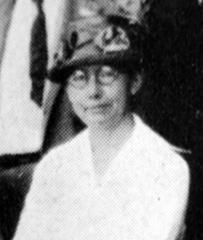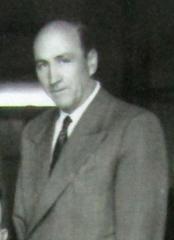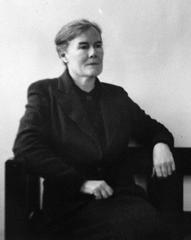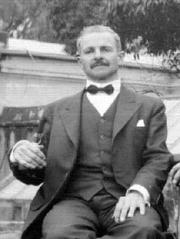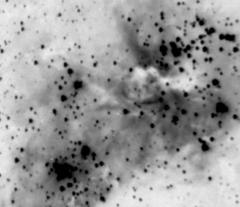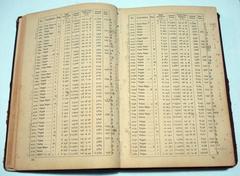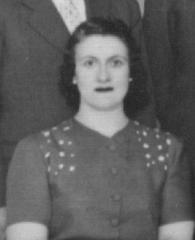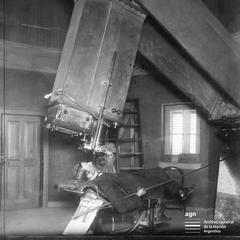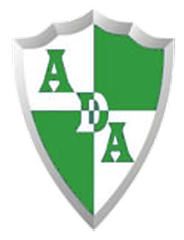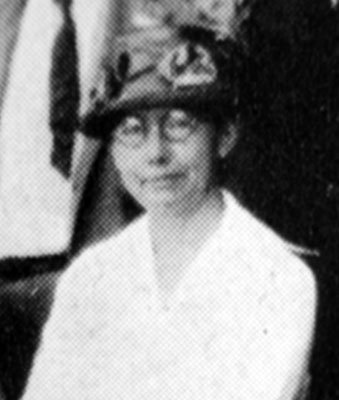
Argentine National Observatory Córdoba: Visiting Hours, Tickets, and Historical Significance
Date: 15/06/2025
Introduction
Nestled in the heart of Córdoba Province, Argentina, the Argentine National Observatory—formally known as the Astronomical Observatory of Córdoba (OAC)—is a beacon of scientific achievement and cultural heritage. Established in 1871 through the collaborative efforts of President Domingo Faustino Sarmiento and American astronomer Benjamin Apthorp Gould, the observatory epitomizes Argentina’s dedication to advancing astronomical research and education in the southern hemisphere. Today, the observatory remains a vibrant center for research, public engagement, and historical preservation, drawing visitors from around the world to its historic domes and interactive exhibits (Tripomatic; Cambridge University Press; Wikipedia).
This comprehensive guide covers everything you need to know about visiting the OAC: detailed opening hours, ticketing options, accessibility, guided tour information, and practical advice for making the most of your trip. You’ll also find insights into the observatory’s historical legacy and recommendations for nearby Córdoba historical sites, ensuring a well-rounded and enriching experience (Trek Zone; Nicki Post’s Travel Stuff).
Table of Contents
- Key Historical Background
- Visitor Essentials
- What to Expect: The Visitor Experience
- Practical Information and Visitor Tips
- Nearby Córdoba Historical Sites
- Frequently Asked Questions (FAQ)
- Visual Resources and Interactive Media
- Conclusion and Call to Action
- References
Key Historical Background
Origins and Founding Vision
The OAC was founded on October 24, 1871, a landmark date now celebrated as Argentine Astronomy Day. President Sarmiento, a visionary reformer, sought to modernize Argentina by investing in education and science and invited Benjamin Apthorp Gould to lead the new observatory. Gould’s expertise in celestial cartography and his international reputation positioned the OAC as a significant player in global astronomy from its inception (Cambridge University Press).
Scientific Milestones and Legacy
From the outset, the OAC contributed pivotal work to astronomy, including the pioneering Córdoba Durchmusterung star catalog, which documented over 613,000 southern hemisphere stars (Scribd: The Cordoba Observatory and The History). The observatory was also at the forefront of astrophotography, taking some of the earliest photographs of Mars in 1879 and publishing the influential “Córdoba Photographs” in 1897. Over the years, the OAC has continued to innovate, train scientists, and foster international partnerships (NOC Argentina).
Visitor Essentials
Location and Accessibility
Address: Calle Francisco de Laprida 854, Córdoba, Argentina (Trek Zone).
The observatory is centrally located in Barrio Observatorio, within walking distance of the city’s main attractions, and easily accessible by public transport, taxi, or on foot.
Getting There:
- From Ingeniero Taravella International Airport: Approximately 12 km, with transfers by taxi, shuttle, or public bus.
- From city center landmarks: 13 minutes on foot from Plaza de la Intendencia, 17 minutes from Patio Olmos, and 20 minutes from the UNESCO-listed Jesuit Block (Wide World Trips).
Visiting Hours and Ticket Information
Main Observatory (OAC, Laprida 854)
- Night Visits: Fridays and Saturdays from 19:00 to 22:00. Free entry, no reservation required (OAC Official Site).
- Planetarium Shows: Four 45-minute sessions each night at 20:00, 20:45, 21:30, and 22:15; first-come, first-served (infodecordoba.com.ar).
- Day Visits: Not regularly available; check the official website for updates.
Bosque Alegre Astrophysical Station
- Location: 50 km southwest of Córdoba in the Sierras Chicas (Wikipedia).
- Day Visits: Saturdays and Sundays, 10:30–13:00 and 15:30–18:00. Entry fee: ARS $2,500 adults; ARS $2,000 children/retirees.
- Night Visits: Saturdays and Sundays, 19:00–21:00. Advance booking and online ticket purchase required (OAC Night Visit Tickets); ARS $3,800 adults; ARS $2,500 children/retirees.
- Payment: Bank transfer; bring payment confirmation.
Guided Tours and Special Events
- Main Observatory: Guided tours, museum access, and telescope observation (weather permitting) included in night visits.
- Bosque Alegre: Guided tours of the 1.54m reflecting telescope, with explanations of ongoing research and historical context.
- Special Events: Meteor showers, eclipses, and educational workshops announced on the observatory’s news section.
Accessibility and Language
- Main Observatory: Partial wheelchair accessibility; some domes require stairs.
- Bosque Alegre: Uneven terrain—wear sturdy footwear.
- Language: Tours and signage are mainly in Spanish. Some guides speak English; non-Spanish speakers should inquire ahead or use translation tools (turismodecordoba.org).
What to Expect: The Visitor Experience
Observatory Highlights
- Historic Main Dome: Houses the 11-inch Merz Equatorial Refractor, one of South America’s oldest operational telescopes.
- Exhibition Halls & Museum: Featuring historic instruments, celestial mapping artifacts, and exhibitions on Argentina’s astronomical heritage (Casa Rosada).
- Planetarium: Full-dome shows with interactive Q&A sessions.
- Night Sky Observation: Guided viewing of southern hemisphere constellations and celestial objects.
Bosque Alegre Astrophysical Station
- Scientific Tours: Learn about the 1.54m telescope’s legacy and ongoing research, including contributions to the Atlas of Austral Galaxies.
- Stargazing: Night visits offer telescope observation in a scenic mountain setting.
Educational Programs and Family Activities
- Interactive Exhibits: Engaging for all ages and tailored to diverse audiences.
- School Tours: Educational programs for groups.
- Special Events: Lectures, workshops, and astronomy olympiads (OAC News).
Practical Information and Visitor Tips
Best Times to Visit
- Clear Skies: March–October, especially during winter (May–September).
- Avoid Crowds: December and March shoulder seasons are less busy.
- Weather: Telescope viewing is weather-dependent; museum and planetarium remain open in all weather (Argentina Travel).
Food, Amenities, and Safety
- No On-site Café: Plan meals before or after; restaurants and cafés are nearby (Wide World Trips).
- Restrooms: Available on-site.
- Safety: Standard precautions apply, especially at night (Across South America).
Booking, Entry, and Photography
- Booking: No reservation needed for main observatory night visits. Advance online booking required for Bosque Alegre night visits (OAC Night Visit Tickets).
- Photography: Allowed in most areas; flash and tripods restricted during telescope sessions. Always check with your guide.
Nearby Córdoba Historical Sites
- Jesuit Block (Manzana Jesuítica): UNESCO World Heritage site, 20-minute walk (Trek Zone).
- Córdoba Cathedral: Iconic colonial architecture in the city center.
- Plaza San Martín: Bustling central square.
- Evita Fine Arts Museum: 24-minute walk from the observatory.
Frequently Asked Questions (FAQ)
Q: What are the Argentine National Observatory visiting hours?
A: Main observatory night visits are Fridays and Saturdays, 19:00–22:00. Bosque Alegre is open for day visits on weekends, 10:30–13:00 and 15:30–18:00; night visits require advance booking, 19:00–21:00.
Q: How do I purchase tickets?
A: Main observatory visits are free and require no tickets. Bosque Alegre night visits require online advance purchase (OAC Night Visit Tickets); day visits are paid at entry via bank transfer.
Q: Are the observatories accessible?
A: The main site is partially accessible; domes require stairs. Bosque Alegre has uneven terrain—plan accordingly.
Q: Is there an English guide available?
A: Some guides speak basic English. Confirm in advance or use translation tools.
Q: Can I take photographs?
A: Yes, except during telescope use and in sensitive areas.
Visual Resources and Interactive Media
Explore the observatory virtually with the 360° virtual tour. For in-person visits, look for high-quality images of the historic domes and telescopes, as well as the Bosque Alegre site. Use alt text such as “Argentine National Observatory historic telescope” and “Córdoba historical sites astronomical observatory.”
Conclusion and Call to Action
The Argentine National Observatory stands at the crossroads of science, history, and culture, offering an unparalleled experience for visitors of all ages. With its storied past, ongoing scientific research, and engaging public programs, the OAC is not just a window to the stars—it’s a portal into Argentina’s intellectual legacy.
Plan your visit using the information above, consult the official website, and stay up to date with announcements on special events. For enhanced visitor experience, download the Audiala app for interactive guides, and follow our social media channels for the latest updates and travel inspiration.
Embark on your astronomical adventure in Córdoba—where history and the cosmos unite.
References
- Astronomical Observatory of Córdoba: History, Visiting Hours, Tickets, and Nearby Attractions, 2025, Tripomatic (Tripomatic)
- Benjamin Apthorp Gould and the Founding of the Argentine National Observatory, 2025, Cambridge University Press (Cambridge University Press)
- Visiting the Argentine National Observatory in Córdoba: Hours, Tickets, and Historical Significance, 2025, Wikipedia (Wikipedia)
- Argentine National Observatory Visiting Hours, Tickets, and Nearby Córdoba Historical Sites: Your Complete Visitor Guide, 2025, Trek Zone (Trek Zone)
- Practical Visitor Tips, 2025, Nicki Post’s Travel Stuff (Nicki Post’s Travel Stuff)
- National Astronomy Day: Homage to the Creation of the Argentinean National Observatory, 2025, Casa Rosada (Casa Rosada)
- Official Website of the Astronomical Observatory of Córdoba, 2025 (OAC Official Site)
